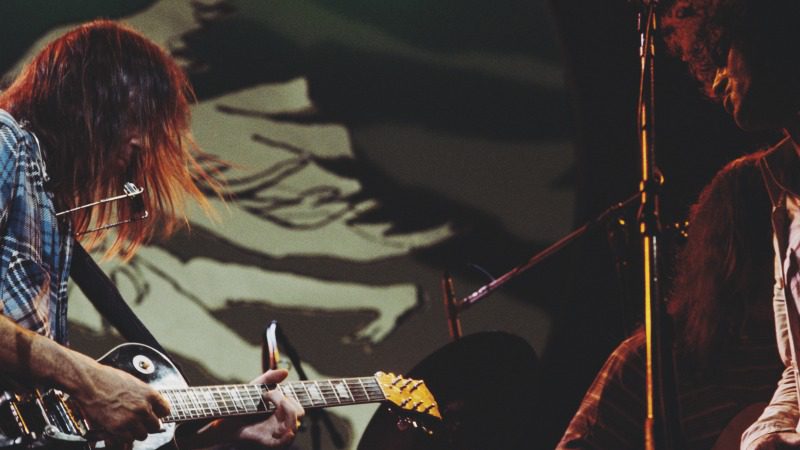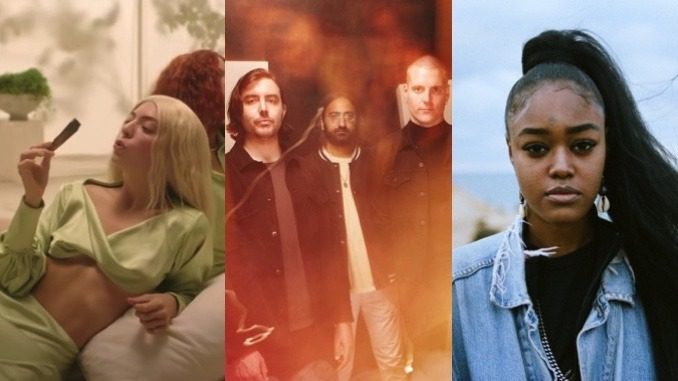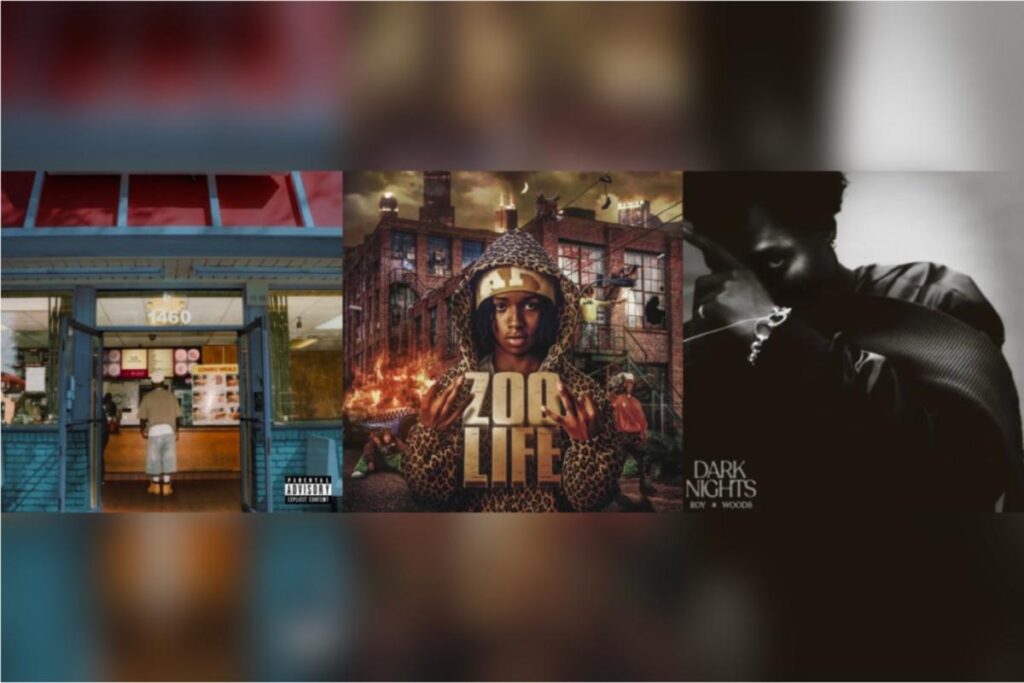Neil put Crazy Horse on ice in 1970, “firing” his backing band after Danny Whitten got himself too strung out before a Fillmore East performance. A great Crosby, Stills, Nash and Young record called Déjà Vu came out that March, the same month Crazy Horse players Danny Whitten, Ralphie Molina, and Billy Talbot, an 18-year-old Nils Lofgren, and Greg Reeves, Jack Nitzsche, and Bill Peterson convened with Neil at his home studio in Topanga Canyon to cut most of After the Gold Rush with David Briggs. With Nils on board, Crazy Horse would gather on their own at Sunset Sound to make a self-titled record that’d barely make a dime. Neil could only promote After the Gold Rush with sit-down acoustic shows because he slipped a disc while grabbing a strip of walnut. After multiple hospital stints he, wrapped in a brace, started recording again, splitting time between studios in Nashville, London, and Woodside, California and singing with the London Symphony Orchestra, Linda Ronstadt, Crosby, Stills and Nash, and James Taylor. A “new” backing band called the Stray Gators was assembled and featured Jack and a batch of country session players (Ben Keith, Tim Drummond, Kenny Buttrey) recruited by producer Elliot Mazer in Nashville after Neil’s performance on The Johnny Cash Show.
THE JOURNEY TOWARDS ZUMA really began with a death in the family. Danny Whitten bit the big one after taking too much diazepam in 1972. Neil had dismissed him from the Stray Gators right before the Time Fades Away tour kicked off, telling his biographer Jimmy McDonough, “he was really wasted. Couldn’t keep it together to remember what he was doin’ in the sessions. I had to tell him he wasn’t in the band. That was a drag. Then he went home and OD’d. That was devastating.” A day after Danny died, Neil wrote “Don’t Be Denied,” a tune he and the Stray Gators would take on the road with them. Every night he’d sing, “Well pretty soon I met a friend, he played guitar. We used to sit on the steps at school and dream of being stars. We started a band, we played all night,” with talented but desperate players who got wasted and demanded 100,000 bucks each to tour. They’d fly gig-to-gig on an Electra prop jet, wrap their lips around a homemade hookah pipe the size of a car exhaust, empty bottles of Jose Cuervo, and snort coke from sunup to sundown. Kenny Buttrey, at Neil’s behest, played the drums so hard he bled on his own kit. It was a shit-show, summed up when Jack Nitzsche got into a limo with Gram Parsons in Houston and told the man that he looked just like Danny, and then Gram went and washed down too much morphine with booze seven months later. “I wish I was as happy as John Denver,” a loaded Neil would later tell thousands of people in London.
At a catastrophic Cleveland gig in February 1973, quarts of tequila finally uncorked the anger festering inside Neil. He played nonsensical solos on his Flying V guitar while Old Black collected dust at his ranch, cursed out fans, and tore his voice to shreds. His singing got so bad that David Crosby and Graham Nash were asked to tag along for the final dates and put some depth behind him. At the Oakland Coliseum a month later, the crowd swarmed the stage during an encore performance of “Southern Man” and a cop started wailing on one fan in particular. Everyone nearby got bent out of shape and hurled beer bottles at the stage, so Neil and the Stray Gators bailed and hopped in a limo waiting out back. A week later, the tour was canned. “Filling a 20,000-seat hall is not rock and roll but rock and roll business,” Neil told a reporter that summer. “I want to be able to see the people I’m playing for, I want to be able to live with myself. I just hope there is not a single off my next album.”
He got his wish. “Time Fades Away” sputtered at #108 on the US chart in November, and “Walk On” would fail to crack the Top 50 the next June. Tonight’s the Night would yield no singles in 1975 and capstone one of the least-commercial periods in Neil’s career. A plane full of dope smoke that engulfed even the pilots’ cabin and a ramshackle band of dudes who hated each other’s guts was probably an omen. But the Time Fades Away tour primarily failed because Neil didn’t want to play the damn Harvest songs. And those were the songs that every crowd wanted to hear, not some batch of unreleased ideas in keys the band plumb forgot half the time. And so Neil would yell at the audiences who didn’t embrace his new material. For Christ’s sake, Harvest was named the #1 album of the year by Billboard in 1972 but the man who made it couldn’t be fucked to perform any of it. “I felt like a product,” Neil said to McDonough, “and I had this band of all-star musicians that couldn’t even look at each other. It was a total joke.”
After the Time Fades Away tour finished, roadie Bruce Berry, whose brother Ken owned Studio Instrument Rentals in Hollywood, got hooked on smack and sold David Crosby’s Stratocaster for a bump. He bought bad blow and sold even shittier blow. June 1973 came around and Bruce’s friend Richard O’Connell hadn’t heard from him in a couple of days. Knocking on the door of his Ocean Park Boulevard apartment, a smell hit him. “It was death,” Richard said. “I walked into the bedroom and there he is on the floor in one of those unnatural positions that you can only end up in if you go out, right?” It was a coke bender that would have buried anybody six-feet deep. But then Richard, with tracks on his own arms, found a hypodermic needle in the bathroom. Bruce didn’t have a chance in hell of living. Guillermo Giachetti put it like this: “Bruce killed himself by breaking the rules, which is to get high alone.”
ALL OF THAT FUCKED Neil up pretty bad. He abandoned a record he was making with Crosby, Stills and Nash and went to David Briggs’ place, telling him he wanted to make a “rock and roll record.” What got made instead was something far more sinister—a tome about fallen idols and coping with piling grief. He called it Tonight’s the Night and sang about Bruce Berry in the title track, calling him a “working man” who “used to load that Econoline van.” “A sparkle was in his eye,” Neil sang, “but his life was in his hands.” Nils Lofgren once told me, “Somehow, the music and the madness saved and healed us through the grief and the rage.” It was a lot of hot-shit musicians trying to make sense of the one thing that’ll never make sense. Neil wasn’t trying to make a masterpiece, he said in 1978, but was “trying to capture a moment.” The album was dirty and had this smoggy schtunk about it. Neil rejected fame and crowds and embraced the idea of a “burned-out rock star just about to go.” Warner Brothers hated it, but Neil thought the songs were “the only chance I had to stay alive.” The label put Tonight’s the Night on the shelf and released Time Fades Away in October 1973 instead. Though it’s the beginning of the “Ditch Trilogy” and one of the most pirated rock releases of all time, Neil called Time Fades Away the worst album he ever made. After Thanksgiving he, along with Ben Keith, Rusty Kershaw, CSN, Billy and Ralphie, Rick Danko, and Levon Helm, split time between Sunset Sound and Broken Arrow Ranch, piecing together a cynical, anti-critic, anti-celebrity, anti-grief masterpiece: On the Beach.
Neil started compiling songs again soon after that—approximately 30 between June 1974 and January 1975 alone, most of them just him, his guitar, and a harmonica. Warner Brothers wanted a proper commercial follow-up to Harvest. Homegrown was gonna be Neil’s big comeback, but the songs were terribly heavy, inspired greatly by his deteriorating relationship with Carrie Snodgress. He told Cameron Crowe that the music was “a little too personal… it scared me,” even though Tonight’s the Night was full of naked admissions. “Separate Ways” spoke to Carrie and their son Zeke (“Sharin’ our little boy who grew from joy back then”) and “Star of Bethlehem,” backed gorgeously by Emmylou Harris, waved goodbye to a love that’s fallen out (“All you have is memories of happiness lingering on”). “Try” was full of phrases Neil remembered Carrie’s mother, who committed suicide right before Homegrown got tracked, saying, especially “I’d like to take a chance, but shit, Mary, I can’t dance.”
Neil was a Chateau Marmont denizen with Sandy Mazzeo around then, renting out the same bungalow John Belushi would overdose in seven years later. One night the Band showed up with Bobby Charles, Billy Talbot, and Ralphie Molina. They did some meth and listened to the Homegrown tapes but Rick Danko lost his shit when Tonight’s the Night came on, said Neil’d be crazy to not put out a record like that. Neil agreed and shelved Homegrown. “Everyone thought [Tonight’s the Night] was awful,” Neil remembered. “Everybody I knew. CSN? Oh, they hated it—wouldn’t even mention it. ‘That’s not a record.’ Then you get guys like the Eagles, Glenn Frey especially—when we did that tour, they thought we were fuckin’ crazy. Glenn would come over and say, ‘Why are you doing this to yourself?’” He called Tonight’s the Night “behind its time” once, and said it’s a record that “doesn’t care—and that’s what makes you feel good about it. There’s no pretense.” It was music made by people who had nowhere else to go, nobody else to say all those things to. Tonight’s the Night is what grieving, drugged-up men getting chased down by death and a tape hiss sound like. Homegrown was full of great songs Neil Young thought he could live without.
BILLY TALBOT WAS STAYING in a cottage up in Echo Park, but it was really just a miniature shack plopped onto the middle of a few acres. There was no driveway, no nothing. A bunch of dogs were running around, and there was a woman within earshot who raised goats. The Hillside Strangler dumped one of his victim’s bodies close by. In late spring 1975, Neil showed up to Billy’s place with a song called “Born to Run.” They rehearsed it and thought they were “hear[ing] the Horse” for the first time since Danny Whitten died. Neil sang, “I see the light of a thousand lamps burnin’ in your eyes, still I have to turn away from you to stay alive,” before chasing a whim up to Malibu. Crazy Horse would soon join him at the beach to make a record together, their first since Everybody Knows This Is Nowhere six years before.
Malibu was hot 50 years ago. Rod Stewart lived out there, and the Band had built a studio by the ocean. One time, Keith Moon passed out near the water dressed in full Nazi gear. Bob Dylan hitchhiked around the area. Neil rented a house on Broad Beach Road before purchasing oceanfront property on Sea Level Drive—a New England-style wooden house decorated with flowers. It was, supposedly, where F. Scott Fitzgerald and Sheila Graham got on with their fucking. All of the Malibu women had Neil’s phone number thanks to David Briggs, who paid 800 bucks a month to rent a house across the street from Goldie Hawn’s. The guys cut Zuma in there, near Point Dume, while topless babes strutted through the sand. Briggs went around and told all his neighbors he’d be “makin’ records all night long,” though Neil and the band never put all that much effort into them anyways: They’d set up the gear in the tiniest bedroom of six, turn the recorders on, and mix the songs right after. Briggs called the songs “free-form,” but would trim the fat to make them semi-coherent. “Neil’s a lot better in houses than he is in studios,” he told McDonough.
Crazy Horse had lost Nils Lofgren to a solo career but added Poncho Sampedro, a rhythm guitarist who didn’t have much finesse but could play the straightforward stuff well. His hair was ungodly long and he wore a lot of tie-dye T-shirts. He was a womanizer who fucked and snorted anyone and everything in sight and still laughed death right out of the building. Billy Talbot found Poncho and brought him to meet Neil at Chess Studios in Chicago in late 1974. Sometimes Poncho liked blow more than he liked playing the guitar. McDonough eventually asked Neil what Poncho offered the band. “He offered me about an ounce of really good grass and some toot,” Neil replied, laughing. “He made it possible to play with the Horse. We had two guitars, bass, and drums again. He just brought the band back together—because Billy and Ralph related to him. At the time he didn’t know how to play that well. He was perfect… for me.”
Poncho gave Neil a chance to “dumb down” his shit. I think Neil needed to make a record like that. Lives were falling apart all around but the women were mighty beautiful. Poncho was stabbing himself with enough heroin to feed the whole band. He heard the Homegrown and Tonight’s the Night tapes and said to Neil, “Here we are in LA, there’s beautiful chicks everywhere, we’re high out of our brains havin’ a great time—isn’t there something else to write about?” So Neil wrote simpler, cruder songs. No frills, just big neck-breaking chords rinsed with gasoline. One of the Homegrown leftovers, “Pardon My Heart,” got put to use, as did “Through the Sails,” the lone survivor of the canned CSNY album Human Highway.
Bob Dylan, who’d played a SNACK benefit show with Neil earlier that spring, showed up to one of the Zuma sessions and riffed on the piano and guitar, never speaking a word. Just nodding. Dylan manned the keys on a take of “Danger Bird” before he and Crazy Horse ran through a couple of his Blood on the Tracks songs. But the band couldn’t land the plane on any of them. “Your band has a good beat, but they can’t play,” he told Neil, who responded, “Yeah, but think about it Bob—you could play with them.” Dylan adored Neil but that was that. Crazy Horse ripped Bobby off on “Barstool Blues,” as Ralphie wailed on the cymbals and Neil sang a tortured, nightmarish tune: “Once there was a friend of mine who died a thousand deaths. His life was filled with parasites and countless idle threats.”
Neil reworked a Squires track called “I Wonder” into the swaggering “Don’t Cry No Tears” and pissed off Carrie while doing it. The women on Zuma were like the women who came and went from Briggs’ home: used and forgotten and ghostly; the “groupies” that hung around the porch looking to get a piece of the guys or a piece of their drugs. The songs reflected “the attitude of the day,” as Neil put it, years after doing a gram of blow and overdubbing “Stupid Girl” while Poncho took a nap. Link Wray, in the twilight of his life, heard the busyness of “Danger Bird” for the first time and found it to be a phantom not unlike one of his own songs, “Genocide.” He was impressed with Neil’s craft, calling it “pure, honest music. No bullshit.” Poncho brought some angel dust into the house and got Billy to smoke some of it before laying down the take of “Cortez the Killer,” a sympathetic, idyllic, and misguided saga of Mesoamerica portrayal that rocks so fucking hard in any and every format.
Neil, perhaps conjuring his separation from Carrie once more, sang about a conqueror torn up and battered over a lost love. He was a tourist retreating into history to make sense of present-tense disasters big and small. At a show in 1996, he told an audience in Virginia that he wrote the song not in Malibu but more than a decade prior while battling a stomach ache. “One night I stayed up too late when I was goin’ to high school… I ate six hamburgers or somethin’. I felt terrible… very bad… this is before McDonald’s. I was studying history, and in the morning I woke up and I’d written this song.” I guess that backstory doesn’t matter too much. What matters is Crazy Horse, the best “bad” backing band there ever was, let all their tattered and bleak spontaneity come unglued during “Cortez the Killer.” It was rock and roll full of mistakes, just as rock and roll ought to be. Neil called Zuma a “hard and hittin’ you kind of a sound, especially if you turn it up” and released it two days before his 30th birthday. He played the songs for Carole King and her response was: “Neil, why don’t you really make a real record?”
ZUMA WAS REAL ENOUGH, though, and it was a record full of terribly unsexy rock music made spontaneously by terribly unsexy men. But if you take enough drugs, both of those statements will turn false real fast. Zuma split the difference between the then-dueling prog and punk scenes with a dirge-y wasteland of elastic, uncomplicated guitar requiems that didn’t always make sense lyrically but wagged their fingers at any and all adult contemporary radio generica regardless. The album went gold, despite the mess of its ingredients—the rambling and transient riffs and solos would bleed into a few-dozen Built to Spill, Drive-By Truckers, Sonic Youth, the Jayhawks, and Dinosaur Jr. records that were yet to come. The first time I heard Poncho and Neil’s guitars streaking around each other on “Lookin’ For a Love” I thought, All music should sound like this—because it was loose and it was rugged, zigging through catchiness and zagging into country bar-band harmony, with one of Neil’s best singing performances in tow. If Brian Eno’s wager was correct, that 30,000 bands started because of The Velvet Underground & Nico, then maybe a few of the 500,000 people who bought Zuma 50 years ago put an amp stack or two in their garages. But then again, numbers add up to nothin’.
A couple weeks after I moved to Hollywood, my partner and I drove to Malibu with my mom, who was visiting from Ohio. We spent lunchtime at Zuma Beach, even though it was cold and gray out. I didn’t think there’d be any music to find there. But still, shiny California girls ran around the beach and unleashed dogs played chicken with cresting waves. The air was filled with salt, not Colombian powder, and Zuma played in my headphones while I laid shirtless near a sandcastle, drinking in whatever light got up enough courage to poke through the clouds. These days I am usually rummaging around in the Sleeps with Angels and Comes a Time tracklists. But I always make room for Zuma. There’s always room for Zuma (except for “Stupid Girl”), especially when your seat is parked at Point Dume.
I watched all the laughter through squinted eyes and thought about a lyric from “Kansas,” one of those once-forgotten Homegrown songs: “I feel like I just woke up from a bad dream.” It makes sense that Zuma came after all that fuss, dreamt to life near a shoreline where the wind blows. David Briggs himself said Neil was at his happiest recording those Zuma songs. “Poncho told me that he’s surprised that I made it,” Neil later said to Jimmy McDonough. “That my head didn’t blow up. That I didn’t freak out completely.” Hell, the guy wrote the “I might live a thousand years” line while he was snorting, smoking, and drinking enough shit to kill an elephant. I don’t know if the house Briggs rented in Malibu is still standing. With music anointed by the voice of God himself bouncing around my head, I didn’t need to look for it. I’m sure Goldie Hawn left a long time ago anyway.
Matt Mitchell is Paste’s music editor, reporting from their home in Los Angeles. Listen to a Neil Young & Crazy Horse performance from November 1976 below.




